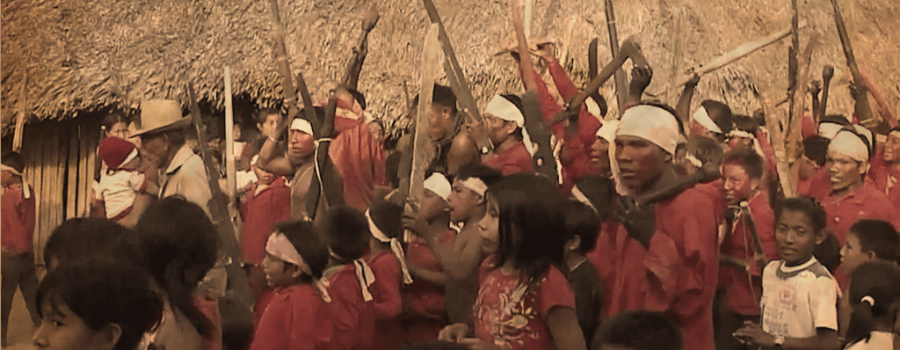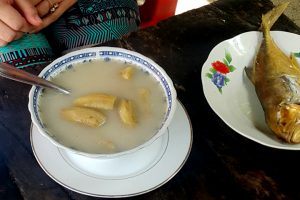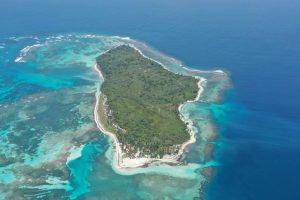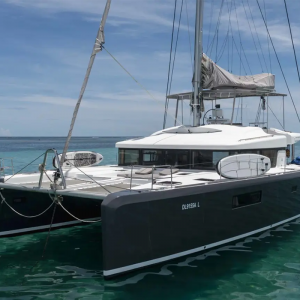Every February, the Kuna or Tule Revolution is celebrated throughout Guna Yala (San Blas Islands Panama). This is a dark passage from the Panama’s History that has not been taught in schools, many Panamanians don’t know about these events, but to understand it, we must know the background of the Kuna or Tule Revolution of 1925.
It’s important to emphasize that these events have marked a milestone in the struggle for the sovereignty of the indigenous peoples of the Americas and that from the same has been obtained the autonomy, although not completely of our region, but at the same time, inspiration for other indigenous peoples to fight for their rights.
When there was Gran Colombia, itself recognized the territory Dulenega, which comprised parts of the north where is now known as Panama and Colombia. When the separation of Panama from Colombia occurs in 1903, the new Republic doesn’t recognize the territory Dulenega, causing it to split in two.
On the side of Colombia, the Guna indigenous group was led by Sahila Inanaginya, who after
his death in 1904, His nephew takes this leadership called Inabaginya, decided that his group should remain in Colombia, thus ignoring the new Republic.
On the Panama side, the indigenous group Guna, led by Ologindibibbilele (Simral Colman), agreed to continue and recognize the new Republic of Panama, in this way the territory Dulenega was splitted in two.
Mentioned above a series of facts were those that activated the Kuna or Tule Revolution of 1925, that next we are going to summarize:
- March 7th, 1907: The Jesuit priest, Leonardo Gasso, arrives at Nargana (Yandup) to found a Catholic mission, causes discontent among the Kuna population and is named Charly (Charles) Robinson, who was then Saila del Pueblo, as governor of San Blas in 1908, since the government sees it as an ally.
- December 31th, 1907: The National Assembly approves Law 59 related to the Indigenous Civilization. In its first and second article, the law says:
(a)The missionaries and teachers of schools shall be civilizing agents, (b) The government shall grant, in accordance with the provisions of this Convention, Lands to the settlers, that is to say non-indigenous, c) The government will give the implements of tillage, seeds, animals to the indigenous people and the settlers… ” - In 1913, the Protestant missionary Ana Coope of the United States of America arrives, and with her enters the Baptist church.
- In 1914, with the culmination of the works of the Panama Canal, the West Indian workers of the Canal invaded the Atlantic coast of the Guna territory, causing them to begin to carry Activities such as: mining, turtle fishing, coconut, rubber and wood exploitation, as well as theft of plantains and coconuts.
- In 1915, Sáhila Colman exposes the situation of thefts, robberies on the part of Afro-Antillean settlers faced President Belisario Porras. At that time, President Porras decided to create an Intendance, whose representative was a colonist (waga) to stop the abuses reported and take control together with a police force.
- Since then, the new Intendent, by not understanding the culture nor the idiosyncrasy Guna, began to lose its autonomy and identity, causing that it had to impose new laws against Of the Gunas such as: Obligation of clothing for women and girls Gunas; Prohibition of ceremonies and ancestral rituals. He imposed the modernized way of life on the Guna Indians and on those who did not comply with the new laws, he fined them and even took them to jail.
- With the installation of the new Intendencia in El Porvenir, the government requires producers Gunas to sell their production at a price below Colombian merchants. Adding this, the new Interdente creates its own shops in some of the islands where the Gunas are forced to buy.
All these facts were the trigger for the Kuna or Tule Revolution of 1925, to take place and thanks to it, today we enjoy the Guna Yala Shire.
We hope this article has been of your total enjoyment, and help us more people know the true story by sharing it and following our social networks.








